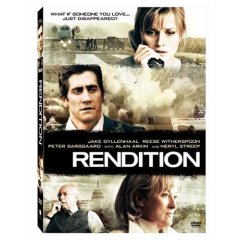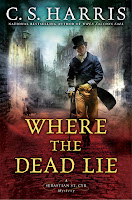Steve Malley pointed me to this thought-provoking New York Times article on the importance of shared reading tastes in relationships.
When books are a big part of your life, it’s nice to have someone who shares your love of reading. I once had a partner whose idea of relaxing in the evening was to collapse in front of the TV, and he liked his TV viewing to be a shared experience. When I disappeared into a book, he took it as a personal rejection. Needless to say, that relationship did not last.
Since Steve and I met in a writers group, a love of reading is obviously something we share, and books are a big part of our lives. Our reading tastes do not exactly dovetail, but they do overlap. We both love James Lee Burke and Martin Cruz Smith and John D. McDonald. But Steve doesn’t have much taste for historical fiction, so he’s never tried many of my favorites, such as Dorothy Dunnett or Ellis Peters. And of course he doesn’t read women’s fiction, whether it’s Alice Hoffman or Ann Rivers Siddons, although he is a good friend, so he reads the books published by his female writer friends. He actually read all seven of my historical romances before he asked me out. What a hero!
Because he listens to books on tape while he drives or works on the house (his current project is screening in our newly rebuilt gallery), he gets through far more fiction than I do. Frequently he’ll listen to books I consider, ahem, commercial garbage. But at least he recognizes it as commercial garbage. Would I still love him if he didn’t? Yes. Would I have as much respect for his literary opinions? Obviously not!
I have friends who read literary books I consider hopelessly pretentious, and I have friends who enjoyed The Da Vinci Code. There are even important people in my life who do not read fiction at all. One of my daughters loves novels, the other hates them. A big reader of nonfiction, she’s always passing me books on everything from stringtheory to STIFFS. We have a lot of things in common, but fiction isn’t one them. And that’s okay too.
Because in the end, books are just one facet of life, and my reading tastes are just one facet of me.
Monday, March 31, 2008
Thursday, March 27, 2008
Now That’s Scary
It’s every writer’s worst nightmare: their precious, hard-wrung words, over which they’ve sweated blood and tears for months and months, gone in the blink of an eye—or rather, in the click of a mouse.
That’s what happened this week to John Connolly. If you’re not familiar with John Connolly, he’s an Irish writer of lyrically beautiful thrillers. If you are familiar with John Connolly, then you’ll probably want to weep when you hear he just zapped the first 30,000 words of his next book into oblivion.
How? He was moving the most recent chapters of his WIP (“The Lovers”) from his laptop to his desktop computer, and accidentally overwrote the original file containing the first section of the book. Click. Gone.
Normally, he backs up his work as he writes. But life has not been normal for John lately. He’s just moved house. He just came back from an extended trip to the States. And, it seems, he does not print out on paper as he writes. So all is truly lost.
We hear these horror stories every so often. A thief who steals both computer and backups. A fire that destroys all. A computer that crashes and can’t be resuscitated. A friend here in New Orleans lost practically an entire manuscript to Katrina’s floodwaters. Time now for us all to take a good, hard look at our own writing/backup practices. I do print out my chapters as I write them; I have never, ever trusted computers, or myself with computers, and I like to hold a manuscript in my hand. But I am still terrible, just terrible, about backing up as I write.
I’ve now set up a separate email account, and hope to get in the habit of emailing myself my output for each day. As for John…he’s called in a computer expert, but the prognosis is not good.
That’s what happened this week to John Connolly. If you’re not familiar with John Connolly, he’s an Irish writer of lyrically beautiful thrillers. If you are familiar with John Connolly, then you’ll probably want to weep when you hear he just zapped the first 30,000 words of his next book into oblivion.
How? He was moving the most recent chapters of his WIP (“The Lovers”) from his laptop to his desktop computer, and accidentally overwrote the original file containing the first section of the book. Click. Gone.
Normally, he backs up his work as he writes. But life has not been normal for John lately. He’s just moved house. He just came back from an extended trip to the States. And, it seems, he does not print out on paper as he writes. So all is truly lost.
We hear these horror stories every so often. A thief who steals both computer and backups. A fire that destroys all. A computer that crashes and can’t be resuscitated. A friend here in New Orleans lost practically an entire manuscript to Katrina’s floodwaters. Time now for us all to take a good, hard look at our own writing/backup practices. I do print out my chapters as I write them; I have never, ever trusted computers, or myself with computers, and I like to hold a manuscript in my hand. But I am still terrible, just terrible, about backing up as I write.
I’ve now set up a separate email account, and hope to get in the habit of emailing myself my output for each day. As for John…he’s called in a computer expert, but the prognosis is not good.
Tuesday, March 25, 2008
Historical (In)Accuracy
I recently read two historical novels, one brilliantly researched and wonderfully historically accurate, the other…not. Because the novels were set about 50 years apart, and because I read them back-to-back when I was sick, the experience left me thinking about historical accuracy, historical inaccuracy, and reviewers and readers’ ability to recognize the difference.
The first book, HONORABLE COMPANY by Allan Mallinson, is set in India before the Raj and forms part of a fascinating series detailing the varied adventures of British Dragoons officer Matthew Hervey through the years following the Battle of Waterloo. A serving cavalry officer in the British Army, Mallinson is also the author of LIGHT DRAGOONS, a history of the British cavalry. This guy knows his stuff, and what he didn’t know has been painstakingly researched.
The second book, from a historical mystery series set in the 18th century, is by a NYT bestselling American author who has branched out into the mystery field after penning a wildly popular romance series set in the same period. Her hero is the younger son of an earl and also an Army officer. Although the author—whom I’ll call “D”—has no professional training or experience, she prides herself on her “thorough” knowledge of the 18th century and frequently brags that she does all her own research. Reviewers and readers consistently sing her praises for her historical accuracy. So it was something of a shock when I began reading her book and found myself tripping over one anachronism after another.
I’m not talking about tangential, nitpicky little things only a specialist would detect, but the kind of information many absorb simply by reading—or by being born English. For instance, most readers of Dorothy L Sayers (and Georgette Heyer) know that Lord Peter Wimsey is called “Lord Peter” because he’s the younger son of a DUKE; if he were the younger son of an earl (like “D”’s hero), he’d be just plain Mr. Wimsey. Likewise, if “D” had ever read Allan Mallinson’s Matthew Hervey series, she’d know that officers of the lowest rank in the British Army in the 18th century (until 1871, actually) weren’t called second lieutenants; they were cornets. And if someone is writing a book set in mid-eighteenth century London, why are they using (as “D” proudly announces in her author’s note) Greenwood’s 1837 map of London? London changed dramatically in those eighty years, and earlier maps are readily available. I could go on and on, but I’ll restrain myself. The point is, why is this author praised for her historical accuracy when her stories are so painfully INaccurate?
I’m beginning to realize that all a writer needs to do to gain a reputation for “thorough research” and “knowledge of the period” is to look at a couple of history books on their subject, salt their writing with strategically lifted tidbits and details, and then tack on an Author’s Note listing a few resources. We saw the same thing happen with Dan Brown, who made hilarious mistakes in both Angels and Demons and The Da Vinci Code, but because he included long passages of info dumps lifted (sometimes verbatim) from nonfiction sources, still managed to fool legions of reviewers into calling his books “exhaustively researched” and “intelligent.”
Ironically, many readers also think they “know” things about a period that they don’t, and will therefore criticize a writer for making mistakes that aren’t mistakes at all. I’ve seen it happen to other writers, and it happens to me. Don’t get me wrong; I make mistakes, too (such as, ahem, mentioning a certain dog breed in Why Mermaids Sing that wouldn’t come into being for another twenty years). But a more in-depth knowledge of a period can, ironically, work against an author, if their knowledge of everything from the state of the Thames in 1812 to early nineteenth century social and intellectual history runs counter to common perceptions.
If I’m sounding a bit disgruntled, it’s because I am. A writer without any real knowledge or understanding of a period can write fun "historicals" that satisfy many readers. That’s fine. But why proclaim an authenticity and expertise that doesn’t exist? True knowledge of a historical period or subject requires more than a few lurid details culled from a couple of reference books. There is also a difference between knowledge of period details and the kind of true UNDERSTANDING of a period and culture that can only come from a more in depth study. A writer doesn’t need to be an historian to achieve this; Allan Mallinson is an Army officer, not an historian. But he knows what he’s writing about, he doesn’t take shortcuts in his research, and it shows.
The first book, HONORABLE COMPANY by Allan Mallinson, is set in India before the Raj and forms part of a fascinating series detailing the varied adventures of British Dragoons officer Matthew Hervey through the years following the Battle of Waterloo. A serving cavalry officer in the British Army, Mallinson is also the author of LIGHT DRAGOONS, a history of the British cavalry. This guy knows his stuff, and what he didn’t know has been painstakingly researched.
The second book, from a historical mystery series set in the 18th century, is by a NYT bestselling American author who has branched out into the mystery field after penning a wildly popular romance series set in the same period. Her hero is the younger son of an earl and also an Army officer. Although the author—whom I’ll call “D”—has no professional training or experience, she prides herself on her “thorough” knowledge of the 18th century and frequently brags that she does all her own research. Reviewers and readers consistently sing her praises for her historical accuracy. So it was something of a shock when I began reading her book and found myself tripping over one anachronism after another.
I’m not talking about tangential, nitpicky little things only a specialist would detect, but the kind of information many absorb simply by reading—or by being born English. For instance, most readers of Dorothy L Sayers (and Georgette Heyer) know that Lord Peter Wimsey is called “Lord Peter” because he’s the younger son of a DUKE; if he were the younger son of an earl (like “D”’s hero), he’d be just plain Mr. Wimsey. Likewise, if “D” had ever read Allan Mallinson’s Matthew Hervey series, she’d know that officers of the lowest rank in the British Army in the 18th century (until 1871, actually) weren’t called second lieutenants; they were cornets. And if someone is writing a book set in mid-eighteenth century London, why are they using (as “D” proudly announces in her author’s note) Greenwood’s 1837 map of London? London changed dramatically in those eighty years, and earlier maps are readily available. I could go on and on, but I’ll restrain myself. The point is, why is this author praised for her historical accuracy when her stories are so painfully INaccurate?
I’m beginning to realize that all a writer needs to do to gain a reputation for “thorough research” and “knowledge of the period” is to look at a couple of history books on their subject, salt their writing with strategically lifted tidbits and details, and then tack on an Author’s Note listing a few resources. We saw the same thing happen with Dan Brown, who made hilarious mistakes in both Angels and Demons and The Da Vinci Code, but because he included long passages of info dumps lifted (sometimes verbatim) from nonfiction sources, still managed to fool legions of reviewers into calling his books “exhaustively researched” and “intelligent.”
Ironically, many readers also think they “know” things about a period that they don’t, and will therefore criticize a writer for making mistakes that aren’t mistakes at all. I’ve seen it happen to other writers, and it happens to me. Don’t get me wrong; I make mistakes, too (such as, ahem, mentioning a certain dog breed in Why Mermaids Sing that wouldn’t come into being for another twenty years). But a more in-depth knowledge of a period can, ironically, work against an author, if their knowledge of everything from the state of the Thames in 1812 to early nineteenth century social and intellectual history runs counter to common perceptions.
If I’m sounding a bit disgruntled, it’s because I am. A writer without any real knowledge or understanding of a period can write fun "historicals" that satisfy many readers. That’s fine. But why proclaim an authenticity and expertise that doesn’t exist? True knowledge of a historical period or subject requires more than a few lurid details culled from a couple of reference books. There is also a difference between knowledge of period details and the kind of true UNDERSTANDING of a period and culture that can only come from a more in depth study. A writer doesn’t need to be an historian to achieve this; Allan Mallinson is an Army officer, not an historian. But he knows what he’s writing about, he doesn’t take shortcuts in his research, and it shows.
Friday, March 21, 2008
The Peace Sign Turns Fifty
**
Many of you may know this, but I didn’t: the peace symbol first made its appearance fifty years ago at a Good Friday march against nuclear weapons in London.
It was designed by an Englishman named Gerald Holtom, a conscientious objector to World War II who grasped the fact that the anti-nuclear movement would benefit greatly from a clearly identifiable visual image. What he came up with was a combination of letters from the semaphore alphabet—a man with hands stretched down and out (N, for nuclear) and with right hand raised (D, for disarmament), within a circle that symbolized the Earth. Holtom later said he was also inspired by the famous Goya anti-war painting, where a despairing man about to be shot stands with his hands down and out to the sides.
Of course, the symbol took on a life of its own in the sixties and seventies, when it crossed the Atlantic and was adopted by the anti-Vietnam War movement, and by the movement for racial equality in both the United States and South Africa. Now I understand the symbol has come to be viewed by many as somehow emblematic of Communism and of opposition to militant American Christianity, with many seeing it as a symbol of a broken cross. A couple in Denver were actually threatened with a fine when they used a peace symbol as a wreath at Christmas.
Kinda makes me want to run out and stick one in the front yard. Happy birthday, peace symbol!
Many of you may know this, but I didn’t: the peace symbol first made its appearance fifty years ago at a Good Friday march against nuclear weapons in London.
It was designed by an Englishman named Gerald Holtom, a conscientious objector to World War II who grasped the fact that the anti-nuclear movement would benefit greatly from a clearly identifiable visual image. What he came up with was a combination of letters from the semaphore alphabet—a man with hands stretched down and out (N, for nuclear) and with right hand raised (D, for disarmament), within a circle that symbolized the Earth. Holtom later said he was also inspired by the famous Goya anti-war painting, where a despairing man about to be shot stands with his hands down and out to the sides.
Of course, the symbol took on a life of its own in the sixties and seventies, when it crossed the Atlantic and was adopted by the anti-Vietnam War movement, and by the movement for racial equality in both the United States and South Africa. Now I understand the symbol has come to be viewed by many as somehow emblematic of Communism and of opposition to militant American Christianity, with many seeing it as a symbol of a broken cross. A couple in Denver were actually threatened with a fine when they used a peace symbol as a wreath at Christmas.
Kinda makes me want to run out and stick one in the front yard. Happy birthday, peace symbol!
Thursday, March 20, 2008
Stalin’s Ghost
It’s been 26 years since Martin Cruz Smith wrote GORKY PARK and first introduced the world to Arkady Renko. His latest Renko book, STALIN’S GHOST, is only the sixth in the series. Books like this cannot be rushed. Smith writes intriguing mysteries with page turning suspense, but they are also so much more. The prose is brilliant, the characters memorable, the descriptions and atmosphere haunting, the stories thought-provoking and enriching. In short, these are stunning works of literature that also happen to be cracking good reads. An all-too-rare combination.
One of the aspects of this series I particularly love is the way Smith has used Renko to illustrate the profound changes that have rocked Russia in the past two decades. In Gorky Park we saw the painfully honorable and ethical Renko struggling for justice in the crazy, upside down world of a moribund and corrupt Soviet regime. Polar Star (my personal favorite) brought us a disgraced Renko trying to survive as the Soviet world collapsed around him. By the time of Red Square, Russia is being torn apart by criminals and capitalism at its most ruthless and destructive. Wolves Eat Dogs, set in Chernobyl, shows us a Russia ravaged by billionaire oligarchs. Now, in Stalin’s Ghost, we see a Russia whose battered citizens are yearning for the glory days of the past while the secret police and Special Forces begin to reassert control.
Through it all, Arkady emerges as one of literature’s great characters. He may be brilliant, but he is not always wise, for in Russia (as in the US), an ethical man truly dedicated to justice will soon fall afoul of the system and his superiors. Once alienated from and disturbed by the coercive, mind-numbing form of Communism implemented in the Soviet Union, Renko is now troubled by the rampant greed and human toll of unbridled capitalism. Loyal to his friends and those he loves, he views the foibles of the world around him with a black wit that makes for highly entertaining reading.
I have one Smith book left—December 6, a historical set at the outbreak of World War II. I’ve been stretching his books out, savoring them in between lesser reads. He is a true master, with much to teach aspiring writers. If I get my thoughts organized, I may make that the subject of a future blog.
One of the aspects of this series I particularly love is the way Smith has used Renko to illustrate the profound changes that have rocked Russia in the past two decades. In Gorky Park we saw the painfully honorable and ethical Renko struggling for justice in the crazy, upside down world of a moribund and corrupt Soviet regime. Polar Star (my personal favorite) brought us a disgraced Renko trying to survive as the Soviet world collapsed around him. By the time of Red Square, Russia is being torn apart by criminals and capitalism at its most ruthless and destructive. Wolves Eat Dogs, set in Chernobyl, shows us a Russia ravaged by billionaire oligarchs. Now, in Stalin’s Ghost, we see a Russia whose battered citizens are yearning for the glory days of the past while the secret police and Special Forces begin to reassert control.
Through it all, Arkady emerges as one of literature’s great characters. He may be brilliant, but he is not always wise, for in Russia (as in the US), an ethical man truly dedicated to justice will soon fall afoul of the system and his superiors. Once alienated from and disturbed by the coercive, mind-numbing form of Communism implemented in the Soviet Union, Renko is now troubled by the rampant greed and human toll of unbridled capitalism. Loyal to his friends and those he loves, he views the foibles of the world around him with a black wit that makes for highly entertaining reading.
I have one Smith book left—December 6, a historical set at the outbreak of World War II. I’ve been stretching his books out, savoring them in between lesser reads. He is a true master, with much to teach aspiring writers. If I get my thoughts organized, I may make that the subject of a future blog.
Sunday, March 16, 2008
Happy St. Pats!

This is my favorite of the city’s many parades. Held the Saturday before St. Patrick’s Day, it begins with a Mass. New Orleans is so frequently painted as a den of sin and depravity that some people forget it’s still a VERY Catholic place.

Leading the parade are the marching clubs—hundreds and hundreds of men in tuxedos (and the occasional kilt), drinking beer and dancing in the street and handing out flowers and beads to the ladies in exchange for kisses.

After that come the floats with riders throwing—in addition to the ubiquitous beads—all the makings for Irish stew: cabbages, carrots, onions, and potatoes. Did I mention the cabbages? You haven’t lived until you’ve been hit in the head by a flying cabbage.

I fell in love with Ireland and the Irish when I first visited that magical land over twenty-five years ago. I even have a smidgen of Irish in me, thanks to a rebel named John Nolan, banished forever from the Emerald Isle by the Evil English. Okay, I admit it; I have way more English/Scots in me than Irish. But still...

On St. Patrick’s Day, the whole world gets to be Irish. Erin Go Bragh!

Wednesday, March 12, 2008
Another &#@$ Flat Tire

Amongst all the horrendous grief, trauma, and expense generated by the failure of the Federal levees during Hurricane Katrina, flat tires obviously rank way, way down there on the misery index. But when it comes to sheer, repetitive aggravation, they can really start to get to you.
Steve and I have had so many flat tires over the last 2 ½ years that I’ve lost count, although as the rebuilding in our own neighborhood progresses, the incidents have lessened. But Sam, who took a year off from Yale Law School to attend premed courses at a local university, just had her third flat in six months.
Her daily commute takes her through Lakeview, which was the scene of the 17th Street levee collapse. Rebuilding the houses and businesses in that area—or demolishing them and starting over—will take years. Sam’s first two flats were caused by roofing nails; the culprit of this latest episode was a drywall screw. Perhaps this is a sign of progress?
Monday, March 10, 2008
Historical Novels Review
There’s a nice article about WHY MERMAIDS SING in the February issue of The Historical Novels Review. If you’re not familiar with the magazine, it’s published quarterly by the Historical Novel Society, and you can read more about it here. In addition to running fascinating articles, it is their ambition to review every new work of historical fiction released in the US and Britain, along with some titles from Canada and Australia.
Since I live under a rock, I’d never heard of HNR before they contacted me for an interview. Now that I’ve discovered it, I intend to subscribe. Definitely a treat if you enjoy historical fiction.
I had a picture of the cover, but for some reason I couldn't get Blogger to upload it. Anyway, the title of the article is “Strange Bedfellows: Historical Fiction and Forensic Medicine.”
Since I live under a rock, I’d never heard of HNR before they contacted me for an interview. Now that I’ve discovered it, I intend to subscribe. Definitely a treat if you enjoy historical fiction.
I had a picture of the cover, but for some reason I couldn't get Blogger to upload it. Anyway, the title of the article is “Strange Bedfellows: Historical Fiction and Forensic Medicine.”
Thursday, March 06, 2008
When a Character Won’t Gel
This isn’t a problem I have often, but I’m wrestling with it now: the antagonist in my current WIP (Work in Progress, i.e., THE DEADLIGHT CONNECTION) just won’t come to life. He lies there on the page, a pale dull reflection of nothing.
Why? I’m not sure. The character in question is an Army general. Now, I know military men. For heaven's sake; my father was an Air Force colonel and I’m married to a retired Army colonel. But this character is also hyper-religious and a racial bigot. And while I’ve known a fair share of people like that, too (although not, fortunately, too intimately), for some reason my General Boyd just won’t gel.
I spent most of yesterday trolling the Internet, reading some truly scary stuff written by some truly scary people out there. Rabid evangelicals (with ready White House access) who think the End Times are upon us and all they need to do to help things along is go nuke Iran. People who homeschool their kids to protect them from the evil influences of biology classes and then send them to colleges where students pledge not to KISS until they’re married. People who drip hatred and ignorance and vile prejudice (many of them also with White House access).
And still the General lays there, an illusive cardboard figure.
I’ve developed his background (for my own usage; most of this stuff never sees the light of day). I know all about his childhood. His rowdy, beer-drinking youth. His decision to “take Jesus Christ as his personal savior”. His marriage and his six kids. And still he lies there on the page, hollow and wooden.
Bookstores are full of popular thrillers with silly, unreal villains. I keep telling myself, Most of your readers will neither notice nor care.
But some will. And I will.
Why? I’m not sure. The character in question is an Army general. Now, I know military men. For heaven's sake; my father was an Air Force colonel and I’m married to a retired Army colonel. But this character is also hyper-religious and a racial bigot. And while I’ve known a fair share of people like that, too (although not, fortunately, too intimately), for some reason my General Boyd just won’t gel.
I spent most of yesterday trolling the Internet, reading some truly scary stuff written by some truly scary people out there. Rabid evangelicals (with ready White House access) who think the End Times are upon us and all they need to do to help things along is go nuke Iran. People who homeschool their kids to protect them from the evil influences of biology classes and then send them to colleges where students pledge not to KISS until they’re married. People who drip hatred and ignorance and vile prejudice (many of them also with White House access).
And still the General lays there, an illusive cardboard figure.
I’ve developed his background (for my own usage; most of this stuff never sees the light of day). I know all about his childhood. His rowdy, beer-drinking youth. His decision to “take Jesus Christ as his personal savior”. His marriage and his six kids. And still he lies there on the page, hollow and wooden.
Bookstores are full of popular thrillers with silly, unreal villains. I keep telling myself, Most of your readers will neither notice nor care.
But some will. And I will.
Wednesday, March 05, 2008
Blog Issues
Sorry to all who’ve had trouble finding my blog lately.
When my blog was redesigned to match my new website, it was necessary to move it to my web designer’s server. This shouldn’t be a problem, as the old blogspot address was supposed to forward automatically. Except that for the last week, that hasn’t been happening.
The annoying thing about blogspot, of course, is that they don’t want to hear from you. So if there’s a problem, it’s your problem.
Efforts by both my web designer and myself to figure out what’s going wrong have proven ineffective. If anyone out there can tell me what to do, I welcome your suggestions. In the meantime, thank you for taking the trouble to find me again. If you link to this blog, please update your links to the address http://csharris.net/blog.html. My apologies for all the hassles.
When my blog was redesigned to match my new website, it was necessary to move it to my web designer’s server. This shouldn’t be a problem, as the old blogspot address was supposed to forward automatically. Except that for the last week, that hasn’t been happening.
The annoying thing about blogspot, of course, is that they don’t want to hear from you. So if there’s a problem, it’s your problem.
Efforts by both my web designer and myself to figure out what’s going wrong have proven ineffective. If anyone out there can tell me what to do, I welcome your suggestions. In the meantime, thank you for taking the trouble to find me again. If you link to this blog, please update your links to the address http://csharris.net/blog.html. My apologies for all the hassles.
Sunday, March 02, 2008
Rendition

I wanted to see this movie when it was in the cinemas, but it came and went too fast. Given its lukewarm reviews, I almost didn’t even bother to rent it. Which would have been a shame, because it is actually very well done. No, it’s not a perfect film. But it is a very good one.
The story is the kidnap and torture by the U.S. Government (in a process know as “extraordinary rendition,” begun by Bill Clinton back in 1995 and seriously kicked into high gear by W) of an Arab-American, and how it effects not only the victim, but also the victim’s family, the CIA personnel involved in the crime, and the Washington politicians who must choose between their consciences and their political careers. There is also an entwined love story involving a young Arab woman and man (the exact North African country involved is never named), and the young woman’s father. This subplot initially annoyed me, but in the end it dovetailed beautifully and added tremendously to the film’s depth and power. (Because almost anything I could say would be a spoiler, I won’t even address that aspect).
Omar Metwally, who plays the victim, Anwar El-Ibrahimi, deserved an Oscar for his brilliant portrayal of a terrified, bewildered, angry, and—ultimately—broken man. Yet this film is not so much about the hapless young chemical engineer who is brutalized, but about the moral choices made by those around him. This seemed to bother some viewers, who require a single hero/heroine they can follow and “get to know.” The whole moral choice thing evidently went over their heads. Some found the entire situation “unbelievable;” cognitive dissonance strikes again. Others complained about the “liberal bias” of the film, which i found really scary. When the assumption that torture is morally repugnant is denigrated as liberal bias, you know a culture is in trouble.
As a writer, I can usually see the twists and climax of a movie coming a mile away. Not so with this film. The suspense came not simply from the question, Will El-Ibrahimi be saved? but also, How far will the torturers go? If El-Ibrahimi is saved, will he be irreparably damaged? Of the various characters faced with a moral choice—the CIA agent played by Jake Gyllanhaal, the Senator played by Alan Arkin, the Senator’s aide played by Peter Sarsgaard, the Muhabarat officer played by Yigal Naor—will any of them rise to the occasion? Or will they all travel down the path of moral abdication taken by so many before them?
This is not a film to watch and forget. I found myself wanting to know what happened to the various characters AFTER the film was over. Did Character X suffer for his decision? What happened to Character Y? And so on. Which, as far as I’m concerned, is the hallmark of a successful film well worth studying.
Subscribe to:
Posts (Atom)



